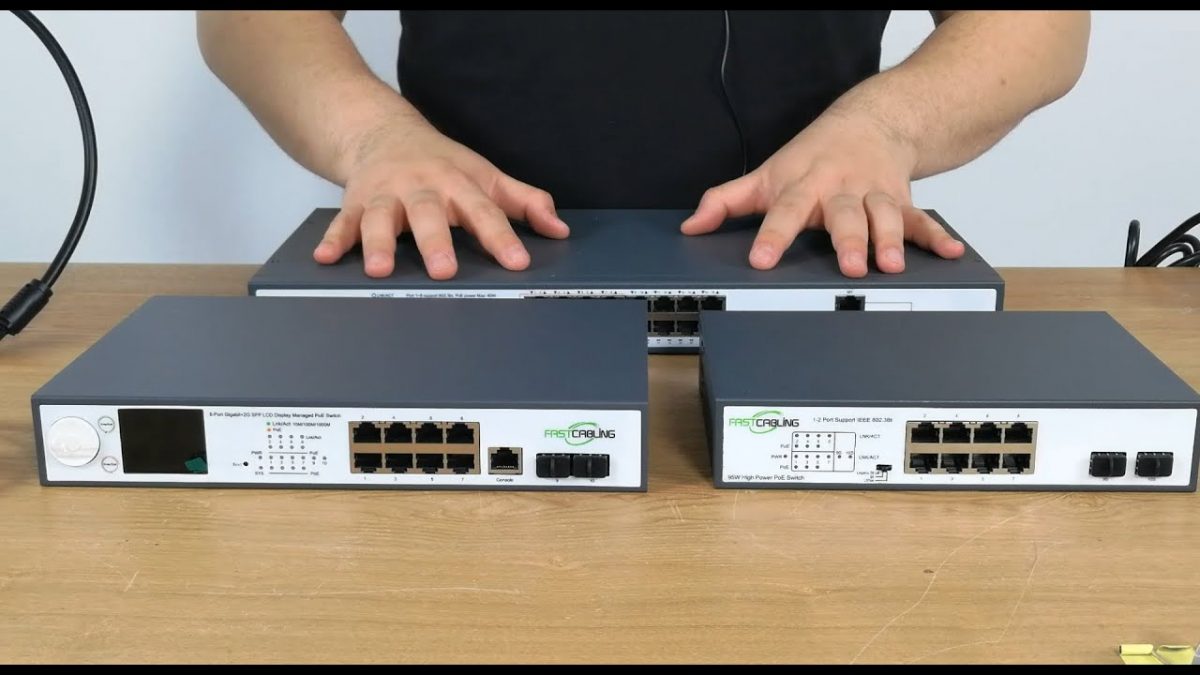Power-over-Ethernet (PoE) has become an increasingly popular technology solution in recent years. Not only does it provide a convenient way to power devices over existing Ethernet cables, but it also allows for greater flexibility in the way the devices are deployed. The IEEE802.3bt PoE++ standard is the latest version of PoE technology, and it’s quickly becoming a go-to choice for businesses that need more power than previous versions of PoE can provide. In this article, we’ll take a look at what IEEE802.3bt PoE++ switches are and how they can be used within your network infrastructure.
What is IEEE802.3bt PoE++?
PoE++ is the next generation of PoE technology, offering up to 100 watts of power over Ethernet cables. It is designed for use with high-power devices such as 4K TVs and gaming consoles, which require more power than standard PoE devices. PoE++ switches are backward compatible with standard PoE devices, making them a great choice for businesses that are looking to upgrade their network infrastructure.
The Different Types of IEEE802.3bt PoE++ Switches
There are three different types of IEEE802.3bt PoE++ switches: Type 1, Type 2, and Type 3. Each type has its own unique set of features and benefits that make it ideal for use in different situations.
Type 1 PoE++ switches are designed for use in data centers and other high-power applications. They offer up to 60 watts of power per port, making them ideal for powering devices that require a lot of power. They also offer some level of protection against power surges, making them ideal for use in environments where power fluctuations are common.
Type 2 PoE++ switches are designed for use in mid-range applications. They offer up to 30 watts of power per port, making them ideal for powering devices that don’t require as much power as those that would be powered by a Type 1 switch. They also offer protection against power surges, making them a good choice for use in environments where power fluctuations are common.
Type 3 PoE++ switches are designed for use in low-power applications. They offer up to 15 watts of power per port, making them ideal for powering devices that don’t require a lot of power. They don’t offer any protection against power surges, so they’re not the best choice for use in environments where power fluctuations are common.
Pros and Cons of Using IEEE802.3bt PoE++ Switches
The use of IEEE802.3bt PoE++ switches can offer some advantages over traditional PoE switches, as well as some potential disadvantages. Below, we’ll take a closer look at both the pros and cons of using these types of devices:
PROS:
– Higher power output than traditional PoE switches (up to 100W per port)
– Can provide data and power over a single Ethernet cable
– Reduced cabling and installation costs
– More flexible installation options (e.g. can be mounted on walls or ceilings)
CONS:
– More expensive than traditional PoE switches
– Requires compatible equipment (e.g. cameras, access points) to take advantage of increased power output
Conclusion
IEEE802.3bt PoE++ switches are a great option for businesses with advanced power requirements, as they provide the ability to support up to 90 watts of power in each port. With the rising demand for higher bandwidth and more powerful devices, IEEE802.3bt PoE++ switches offer an excellent solution that can help save on costs while providing a reliable connection for all your devices. So if you’re looking for an efficient way to manage your network needs, why not consider investing in IEEE802.3bt PoE++ swiches?
